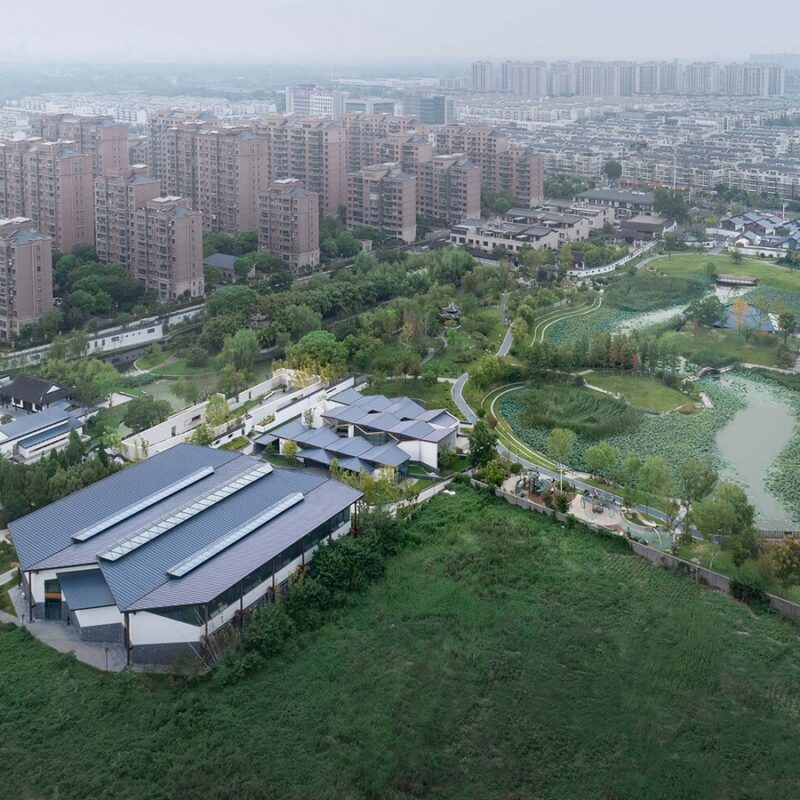Historical Background
Situated on the northern bank of Yangzhou’s ancient canal, Zhuxi Wonderland’s roots trace back to the Ganga ditch in the Spring and Autumn period. Over time, it transformed into the Shangxing Palace during the Sui Dynasty and later into the Kamigata chanzhi Temple during the Tang Dynasty. Today, it stands as a park, named “Zhuxi Jiajing,” blending history with contemporary design.
Planning and Design Philosophy

- Park Iteration: Following the landscape techniques of gardens, the park’s layout is reorganized with a focus on open spaces and water bodies, creating a harmonious and spacious environment.
- Architecture Renewal: Five new buildings, each representing traditional spatial archetypes, are integrated into the park to honor its historical significance while embracing modernity.
Courtyard Revival
- The Courtyard: Reflecting on Han Xizai’s Night Banquet, the courtyard’s modern interpretation fosters various scenes of interaction and poetic experiences, blending traditional elements with contemporary functionality.

Architectural Adaptation
- The Gymnasium: Inspired by ancient ‘temple-type’ bars, the gymnasium explores spatial adaptability through a reconfigured beam and column system, ensuring versatility in usage scenarios.
- Dining Room: Using a ‘multi-story courtyard’ model, the restaurant merges interior and exterior spaces seamlessly, creating a dynamic environment conducive to human interactions.
Nature Integration
- The Tea House: Nestled on the lake island, the Tea House embodies a unique spatial atmosphere, juxtaposing views of water and mountains to reconnect visitors with nature’s changing dynamics.
- Visitor Centre: Blending city hustle with park tranquility, the visitor center’s multi-faceted courtyard design invites visitors on a journey from urban chaos to serene garden landscapes.
Innovative Construction
By deconstructing and reconstructing traditional architectural language across these areas, Zhuxi Wonderland pioneers a new architectural vocabulary, bridging the past with the present and fostering fresh perspectives on traditional cultural heritage.


































